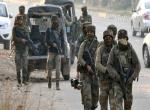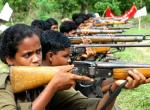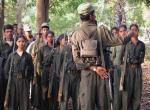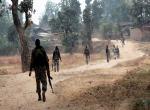THEY HAVE VULNERABILITIES THAT CAN BE EFFECTIVELY EXPLOITED
WHEN the government proclaims Left Wing Extremism as the most serious security threat faced by the country, the obvious question that arises is: What exactly determines the seriousness of a security threat in comparable terms? It is determined by the viciousness of the enemy’s intentions and its capability of causing damage and destruction to achieve its objectives. In this context, intentions include political and ideological objectives that can undermine the established politicoconstitutional order.
Capabilities encompass a wide range of factors — weapons holdings, skills and motivation levels, financial strength, collaborative linkages, quality of leadership, organisation etc.
This, however, is only half the truth. A security threat also depends on the comprehensive power of the state and its ability and will to exercise it, the strength of its institutions to convert state objectives to ground realities, and the capacity of its leadership to optimise its gains from available resources. Often threats assume a seriousness disproportionate to their intrinsic strength not because they are per- se formidable but because the response is deficient. Left Wing Extremism is a case in point.
Left extremists enjoy many advantages like vast and inaccessible terrain which is difficult to dominate or sanitise no matter what force levels are pumped in. Remember how long and what all it took to neutralise one Veerappan in a relatively much smaller area? Further, they have to their advantage not only a huge alienated population that has suffered decades of social and economic neglect, but a setting where the extremists enjoy reach and credibility that no other state or non state actor, including political parties, do. Their other strength is availability of an ideology easy for the extremists to package and sell in the backdrop of the poor credibility of “ democratic” political parties and their leaders.
Leaders
The extremists are able to project the existing political order as being responsible for their suffering and offering their brand of communism as the sure and only answer. With no counterview projected, they are able to exploit caste conflicts in Bihar, resentment against landlords in Andhra, sentiment against forest laws and practices in tribal areas, unemployment among youth or radicalism among sections of Muslims simultaneously, putting Maoism before all of them as a panacea. Their other strength lies in large scale rural unemployment — increasing every year with a rising youth population. With availability of money to pay as regular salaries, they have more people willing to join their People’s Army than they are capable of training and handling.
However, the story does not end here — they have some high vulnerabilities as well. Like most ideology driven movements, the Left Wing Extremists are controlled by less than a dozen top kingpins and nearly 30 commanders of its armed cadre. They determine the political line, control the resources and design their strategy. The majority of the 13,000 odd armed cadres and the many more supporters are gullible tribals and poor people misled by vicious propaganda, frightened by the gun or lured by the money. For the leaders — who themselves live in conditions of safety and comfort — they are easily replaceable commodities.
Neutralisation of top leaders and activists in the four decades long history of Left Extremism has invariably led to ideological dilution, dissensions, demoralisation, giving a blow to their image of invincibility, and creating doubts about the political viability of the movement and achievability of victory through violence. At the tactical level, it has led to a struggle for leadership, a disruption in sources of funding and weapons and the abandonment of plans in the pipeline.
Further, the questioning of top leaders has often provided strategic and tactical inputs, which, when pursued imaginatively, have substantially weakened the movement. Inherent in intelligent interrogation of top functionaries lie answers to questions that can lead to degradation of the movement.
At times, they become part of the government’s counter terrorist effort and whenever that happens their contribution is substantial. Targeted operations against them are also much more cost effective than frittering away the forces too thinly on the ground and exposing them to dangers with little corresponding gains.
The other vulnerability of Left extremism is its discredited ideology, which has not only been discarded all around the world, but goes against the Indian ethos and civilisational mindset.
Devoid of its ideological plank the movement stands reduced to a problem of organised crime. The leadership fears nothing more than losing its revolutionary halo, though a good number of them lead a life of comfort and, amongst many, even ideological conviction is not as strong as generally believed.
The demolition of this contrived self image is their high vulnerability. A credible, focused and sustained psywar offensive to expose the movement as anti- people will be hard for them to counter. The people should be made to realise that the movement is nothing but a pipe- dream of a few to acquire power through violence.
Mainstream
Contradictions in their ideologies and stories of the ordinary people’s suffering under totalitarian regimes, too, need to be highlighted. There are also many aspects of their collaboration with the rich and powerful to collect funds, instances of moral turpitude, the use of high handed methods to deal with dissent, which need to be given wide publicity. They may not produce instant results but credibly structured, imaginatively packaged and widely disseminated, they can produce spectacular results over a period of time.
It is noteworthy that people are attracted to Left extremism not so much by its ideology as on account of their high personal alienation. The political parties have an antidote to outdo the Left extremists in this game by accessing the people, mobilising them against extremist ideology, redressing their grievances and allaying their fears — real or imaginary — by democratically acceptable means.
Unfortunately, the divisive politics of the country, thriving on the faultlines of caste, religion, language, ethnicity etc are more a cause than cure of the problem. Further, quite often the political parties arrive at a secret political understanding with the extremists for electoral gains. At times, they buy peace by surrendering to their unreasonable demands like allowing them to raise funds or transferring upright and honest officers.
Political parties which for the last six decades have mobilised people under all conceivable faultlines of caste, ethnicity, language, religion etc. should, shift their focus now and use all their equations and influence to defend democracy and national interests.
Shift
The money factor is another important element helping Left extremists to expand and intensify their activities.
It enables them to raise their cadre strength by recruiting unemployed youth on regular salaries. A fresh recruit is paid Rs 2,000 to 2,500 per month, which in a poverty stricken backward area is a big attraction. Similarly, with accretion in financial resources, they are able to procure more sophisticated and greater quantities of weapons, adding to their firepower and lethality.
It is estimated that the extremists are able to collect nearly Rs 1200 crore a year, which is big money, for carrying out a subversive warfare in tribal and backward areas. It is able to raise these funds through corrupt government officials, protection money collected from rich landlords and businessmen, by intimidating contractors, transporters etc. and the imposition of levies on forest and coal produce etc.
Paradoxically, the increase in government outlays for development activities in affected areas also strengthen them financially because these enhanced outlays are not backed up by an effective and accountable administrative machinery.
Naxal violence is different from other conventional terrorist models in its tactics which provide much larger space for security and intelligence agencies to operate. Unlike terrorists who work through small conspiratorial groups, maintaining utmost secrecy, Naxal violence is carried out through mobilisation of large bodies of men running into several hundreds. Intelligence penetration in such situations is much easier and can open up various possibilities to counter their actions.
The doctrine of using time tested methods of pumping in more paramilitary forces without a definite plan, enhancing modernisation grants without monitoring how they are being used, and building ever new platforms for better coordination may be correct, but they are not adequate to tackle the problem. A strategic shift is necessary to turn the tide in our favour.
The writer is former Director of the Intelligence Bureau









Post new comment